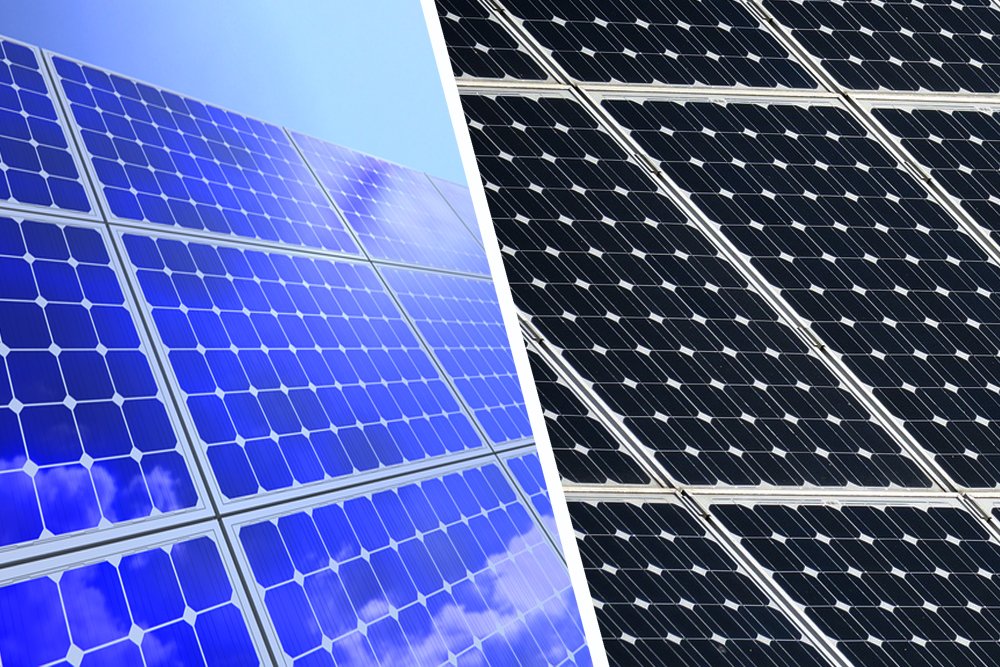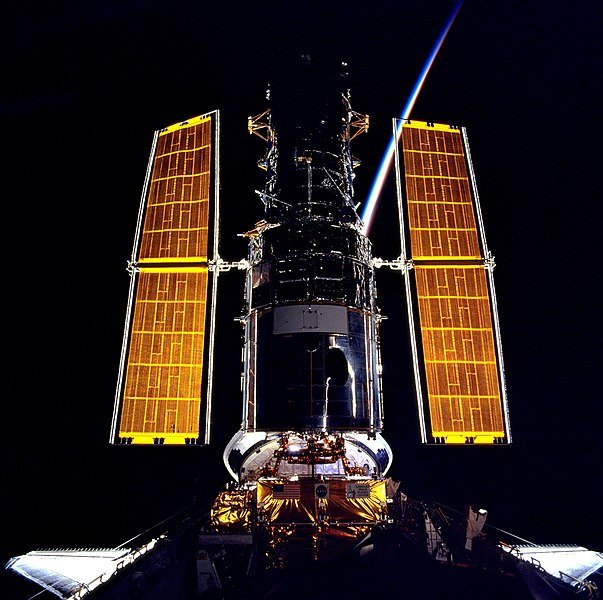Table of Contents (click to expand)
The main reason that the ISS solar panels are gold is because they are more efficient than blue or black solar panels. Gold is more malleable and ductile than a semiconductor, and it has great efficiency in terms of conductivity of electricity, which is highly imperative for solar energy conversion into electricity.
If you’ve ever seen a solar panel, then you have probably noticed that they are typically blue or black in color. However, these aren’t the real “gold standard” of solar panels (pun intended). The panels attached to the International Space Station are gold in color, but what’s the reason for this difference in color, and does it lead to any performance differences in the harnessing of solar energy? Before we dive into the differences between these two kinds of panels, let’s first review the basic function of a solar panel.

Working Of A Solar Panel
A solar panel works by harnessing light energy that is emitted by the Sun. To be more precise, a solar panel harnesses the photons emitted from our nearest star. Our Sun is an incredibly good fusion nuclear reactor and starts by fusing Hydrogen into Helium. This process of fusion releases extreme amounts of energy in the form of heat and light. The light that the sun emits consists of tiny packets of energy known as photons. It takes about 8.5 minutes for these photons to travel from the Sun to the Earth, a distance of approximately 149.6 million kilometers.

The flood of photons striking Earth is converted into electricity within a solar panel due to the Photovoltaic Effect (PV). The photovoltaic effect was first discovered by Alexander Edmond Becquerel. At age 19, when experimenting with silver chloride in an acidic solution, he placed two platinum electrodes in the solution and observed that when light struck the electrode, voltage was produced between the electrodes. The photovoltaic and photoelectric effects are similar in their basic concept: when exposed to light, a certain amount of voltage and current are present. The primary difference occurs in the use of terminology. The term “photoelectric effect” is usually applied where electrons need to be ejected, whereas the term “photovoltaic” is used to describe the excited charge within a given material.
Also Read: Why Is There A Limit To The Efficiency Of Solar Panels?
Blue And Black Panels
Solar panels are blue because they’re made of silicon or polycrystalline, which is used to make the main photoelectric film of the solar panel. However, the predominant shade of blue is made even more prominent due to the anti-reflective coating on the panel. This anti-reflective coating helps to improve the efficiency and absorbing capacity of the panel. Black solar panels—also known as monocrystalline panels—are more efficient, as black is a good absorber.

The silicon used in polycrystalline panels is made from raw silicon that has been melted and poured into molds, which gives them a square shape. This process doesn’t align the silicon perfectly, which results in the formation of many individual silicon crystals within the mold. The nature of the individual silicon crystals also produces the speckled, glimmering appearance and blue color of polycrystalline panels. The polycrystalline cell manufacturing process leads to less waste and energy use than what is needed to produce monocrystalline cells. As a result, polycrystalline solar panels are less expensive and much more widely used. Due to the lower cost of polycrystalline solar panel production, about 90% of the solar panels on the market today are polycrystalline; consequently, most solar panels have a blue hue to them. The silicon used to make the black panels have very high purity, although the alignment of the silicon is similar to that present in a polycrystalline solar cell.
Golden Panels

Although the black and blue solar panels are efficient, the ISS is almost solely dependent on its solar arrays (a solar panel like an array) for harnessing the power, so they need to be the best in class. Now gold is preferred over blue and black panels for two primary reasons. The first reason is that gold is more malleable and ductile as compared to a semiconductor and the second one is that it has great efficiency in terms of conductivity of electricity which is highly imperative for solar energy conversion into electricity. The solar arrays of the ISS are responsible for the life support, control systems, and all other systems on the ISS. NASA and its partners developed a method of mounting solar arrays on what is known as a blanket. The blanket can be folded up or completely unfurled. Once the array reached orbit, the ground controllers sent commands to deploy the blankets to their full size. Gimbals are employed to rotate the arrays so that they face the sun and provide maximum power to the space station. Each of the eight solar arrays is 112 feet long and 39 feet wide. The space station’s solar arrays need to be constantly replaced, and multiple manned space shuttles have been deployed to ensure the proper reinstallation of these critical arrays.
There are currently four sets of arrays aboard the station, which can generate 84 to 120 kilowatts of electricity—enough to easily power 40 homes. The solar arrays produce more power than the station needs at one time, so there is always an ample amount of power to run the station’s systems and experiments at any time. The extra power generated by the solar arrays is used to charge the station’s batteries. There are instances where partial or complete covering of the solar arrays occurs due to the shadow cast by the earth. During these times, the arrays do not collect sunlight, which is when the role of the storage batteries is so pivotal. In conclusion, we can say that, while these golden solar arrays aren’t feasible for the everyday solar energy consumer, it is imperative for the ISS to have such high-end panels, as they are the main source of power for the station!
Also Read: How Are Artificial Satellites Powered?
How well do you understand the article above!

